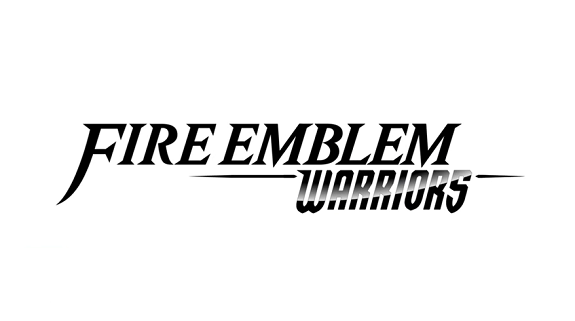Fire Emblem Warriors: details on gameplay systems (weapon advantage, Classic / Casual, more)
Following the article in the latest issue of Famitsu magazine (now available in stores), Koei-Tecmo has updated the official website for Fire Emblem Warriors, providing us with some more details about the game. This time, the System section of the website was opened, and features details about the various gameplay systems.
This section starts by explaining that Fire Emblem Warriors combines the exhilirating action of the Musou / Warriors series to elements from the Fire Emblem series (just like Hyrule Warriors did with elements from The Legend of Zelda). To be more precise, the game incorporates various strategy elements from Fire Emblem, but also the Bond system (though not in the exact same way as in recent Fire Emblem games), and more.
But first, let’s talk about weapons. To gain the upper hand in battle, you need to pay attention to your weapons. Some types of weapons are stronger against others for example. As mentioned previously, the usual Weapon Triangle system is in the game, just like weapon advantage (like bows being strong against flying units, etc.).
Here’s some key elements from the battle system:
- Stun gauge: when you’re fighting enemies, and if your weapon happens to be effective against them, not only will you deal more damage, but you will also fill up a gold-coloured gauge.
- Finishing Move: when you’ve filled up the Stun Gauge, you can launch a finishing move. If you use a weapon that’s effective against your opponent, then this move will deal even more damage than normal.
- Special Effect: if you use special weapons, you can deal even more damage against certain types of enemies. For example, the screenshots below show a sword called “Armour Killer”. It’s pretty effective against… yup, you guessed it: armoured enemies!
Next, we have mobility. Just like in regular Fire Emblem games, the various units don’t move the same way on the battlefield. Of course, since Fire Emblem Warriors isn’t turn-based, it’s not a direct implementation, but the main characteristics of the various classes have been kept.
Let’s take mounted units for example: Great Knights and Pegasus Knights can move around pretty swiftly on the battlefield, thanks to their mounts. There’s also special moves made specifically for those units, that make use of riding and flying (such as a unit charging into a group of enemies with its horse, for example).
What’s more, the various battlefields have specific areas where only Flying units can go through, so that’s something to keep in mind when choosing the units to take with you before the battle starts. Taking advantage of those “Flying units-only” routes could very well allow you to get the upper hand in battle, after all.
Next, something Fire Emblem fans are pretty familiar with… tactics. Unlike some other Warriors / Musou games, you can give instructions to the various units. This doesn’t really turn Fire Emblem Warriors into a pure strategy game like mainline Fire Emblem games, but it does add some welcome depth to the battle system.
For starters, you can give instructions to your units, and tell them to go to various places. You can use that to your advantage during battle, by coordinating the movements of your army and their attacks. But that’s not all: you can do more that simply tell units to go to somewhere specific. You can also tell them what to do afterwards: attack the important enemy unit there? Just keep fighting normally? Do nothing? It’s for you to decide!
Also, if you don’t want to give instructions all the time, you can choose to give general instructions to each unit instead. You can choose to have them focus on attack for example, but also let them be if you want to let the AI decide what to do at all times.
Unlike Hyrule Warriors on Wii U, but just like Hyrule Warriors Legends on Nintendo 3DS, you get to control 4 units in battle in Fire Emblem Warriors. You can switch from one to the other at (almost) any time, which is pretty handy if you want to focus your attention to a specific part of the battlefield.
Good to know: you can combine that character switching with the tactics mentioned above. For example, you can order a unit to go to a specific part of the battlefield, and then, when it’s arrived where you wanted it to be, you take over. That way, you can optimise your play time, by not losing time moving around the battlefield yourself.
Next, we have the Bond system. As mentioned previously, when two units fight together on the battlefield, their bond deepens. After a while, it will level up, allowing you to get some rewards, but also watch this game’s equivalent of Support Conversations.
Finally, we have something called “Lost”. Basically, if a unit falls in battle, it will be “lost”: you will no longer be able to use it anymore. However, it’s not clear if a “lost” character stays “lost” forever, or if it’s only for a few battles (the wording implies it’s forever). One thing is certain though: “Lost” is only for Classic mode. You can choose to play on Casual mode instead, if you don’t want to lose any units.
As for characters, two new units were revealed this week (click here for the list of confirmed characters so far):
- Robin (Female), from Fire Emblem Awakening. Voiced by Sawashiro Miyuki.
- Cordelia, from Fire Emblem Awakening. Voiced by Eimi Okada.
Finally, here’s the latest batch of screenshots and artworks for the game:
Fire Emblem Warriors (Switch, New 3DS) comes out on September 28th in Japan, and this Fall in Europe and North America.
Source: 4Gamer
























